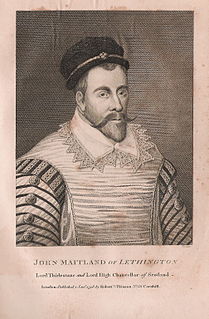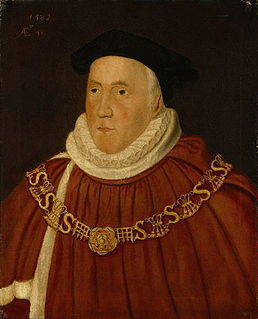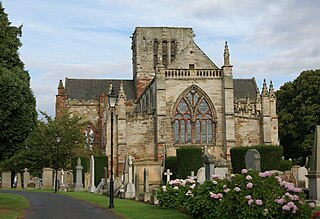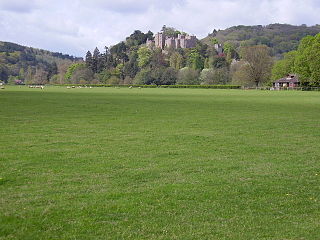Related Research Articles

Edward VI was the King of England and Ireland from 28 January 1547 until his death. He was crowned on 20 February at the age of nine. Edward was the son of Henry VIII and Jane Seymour, and England's first monarch to be raised as a Protestant. During his reign, the realm was governed by a regency council because he never reached maturity. The council was first led by his uncle Edward Seymour, 1st Duke of Somerset (1547–1549), and then by John Dudley, 1st Earl of Warwick (1550–1553), who from 1551 was Duke of Northumberland.

Edward Seymour, 1st Duke of Somerset, was the eldest surviving brother of Queen Jane Seymour (d. 1537), the third wife of King Henry VIII. He was Lord Protector of England from 1547 to 1549 during the minority of his nephew King Edward VI (1547–1553). Despite his popularity with the common people, his policies often angered the gentry and he was overthrown.

Francis Russell, 2nd Earl of Bedford, KG of Chenies in Buckinghamshire and of Bedford House in Exeter, Devon, was an English nobleman, soldier, and politician. He was a godfather to the Devon-born sailor Sir Francis Drake. He served as Lord Lieutenant of Devon (1584-5).
Broughty Castle is a historic castle on the banks of the river Tay in Broughty Ferry, Dundee, Scotland. It was completed around 1495, although the site was earlier fortified in 1454 when George Douglas, 4th Earl of Angus received permission to build on the site. His son Archibald Douglas, 5th Earl of Angus was coerced into ceding the castle to the crown. The main tower house forming the centre of the castle with four floors was built by Andrew, 2nd Lord Gray who was granted the castle in 1490.

The Battle of Pinkie, also known as the Battle of Pinkie Cleugh, took place on 10 September 1547 on the banks of the River Esk near Musselburgh, Scotland. The last pitched battle between Scotland and England before the Union of the Crowns, it was part of the conflict known as the Rough Wooing, and is considered to have been the first modern battle in the British Isles. It was a catastrophic defeat for Scotland, where it became known as "Black Saturday". A highly detailed and illustrated English account of the battle and campaign authored by an eyewitness William Patten was published in London as propaganda four months after the battle.

William Parr, 1st Marquess of Northampton, 1st Earl of Essex and 1st Baron Parr, KG was the son of Sir Thomas Parr and his wife, Maud Green, daughter of Sir Thomas Green, of Broughton and Greens Norton. William Parr was brother of the Queen consort, Catherine Parr, the sixth and final wife of Henry VIII, and of Anne Parr.

Sir Thomas Arundell of Wardour Castle in Wiltshire was a Cornish administrator and alleged conspirator.

John Maitland, 1st Lord Maitland of Thirlestane, of Lethington, Knight (1581), was Lord Chancellor of Scotland.
William Gordon was a 16th-century Scottish noble and prelate, the last of the pre-Reformation bishops of Aberdeen owing allegiance to the Roman Catholic Church.

Sir Christopher Wray was an English judge and Chief Justice of the King's Bench.
Events from the 1540s in England.

Sir Michael Stanhope of Shelford in Nottinghamshire, was an influential courtier who was beheaded on Tower Hill, having been convicted of conspiring to assassinate John Dudley, 1st Duke of Northumberland, and others.

Sir John Puckering was a lawyer and politician who served as Speaker of the House of Commons and Lord Keeper of the Great Seal from 1592 until his death.

Sir John Luttrell feudal baron of Dunster in Somerset, of Dunster Castle, was an English soldier, diplomat, and courtier under Henry VIII and Edward VI. He served under Edward Seymour, Earl of Hertford in Scotland and France. His service is commemorated in an allegorical portrait by Hans Eworth.

The Sieges of Haddington were a series of sieges staged at the Royal Burgh of Haddington, East Lothian, Scotland, as part of the War of the Rough Wooing one of the last Anglo-Scottish Wars. Following Regent Arran's defeat at the battle of Pinkie Cleugh on Saturday 10 September 1547, he took Haddington, with 5000 troops including French mercenaries and troops sent by Henry II of France to bolster the Auld Alliance. Afterwards, Francis Talbot, 5th Earl of Shrewsbury took it with nearly 15000. The English forces built artillery fortifications and were able to withstand an assault by the besieging French and Scots troops supported by heavy cannon in July 1548. Although the siege was scaled down after this unsuccessful attempt, the English garrison abandoned the town on 19 September 1549, after attrition by Scottish raids at night, sickness, and changing political circumstance.

The Rough Wooing was a war between Scotland and England. Following its break with the Roman Catholic Church, England attacked Scotland, partly to destroy the Auld Alliance and prevent Scotland being used as a springboard for future invasion by France, partly to weaken Scotland, and partly to force Scotland to agree to a marriage alliance between Mary, Queen of Scots, and the English heir apparent Edward, son of King Henry VIII. An invasion of France was also contemplated. Henry declared war in an attempt to force the Scots to agree to a marriage between Edward, who was six years old at the start of the war, and the infant queen, thereby creating a new alliance between Scotland and England. Upon Edward's accession to the throne in 1547 at the age of nine, the war continued for a time under the direction of the Duke of Somerset before Somerset's removal from power in 1549 and replacement by the Duke of Northumberland, who wished for a less costly foreign policy than his predecessor. It was the last major conflict between Scotland and England before the Union of the Crowns in 1603, excepting perhaps the English intervention at the Siege of Leith in 1560, and was part of the Anglo-Scottish Wars of the 16th century.

Sir James Wilsford was an English soldier and politician, who was commander at the Siege of Haddington in the war known as the Rough Wooing and also sat as Member of Parliament for Barnstaple.
Mariotta Haliburton, Lady Home was a 16th-century Scottish noblewoman. She varied the spelling of her forename between Mariotta, Marion, and Mary. She is remembered for her defence and negotiation of the surrender of Hume Castle after the Battle of Pinkie when the castle was surrounded by an English army. Afterwards she continued to struggle for the rights of her people at the village of Hume in the Scottish Borders, writing both to the English commander and the Scottish leader.

John Cockburn, laird of Ormiston, East Lothian, Scotland, was an early supporter of the Scottish Reformation. He was the eldest son of William Cockburn of Ormiston and Janet Somerville. John was usually called "Ormiston." During his lifetime there was also a laird of Ormiston in Teviotdale near Eckford, a member of the rival Hepburn family.

The feudal barony of Dunster was an English feudal barony with its caput at Dunster Castle in Somerset. During the reign of King Henry I (1100–1135) the barony comprised forty knight's fees and was later enlarged. In about 1150 the manors retained in demesne were Dunster, Minehead, Cutcombe, Kilton and Carhampton in Somerset, and Ham in Dorset.
References
- ↑ The History of Parliament: the House of Commons 1509-1558, ed. S.T. Bindoff, 1982
- ↑ For the acquisition, see Warwickshire County Record Office (Landor of Rugely (Staffs) and Bishops Tachbrook collection), National Archives Online Catalogue 1908/72/1-4, dates 1546-47, 1548, 1549, 1558.
- ↑ Calendar State Papers Scotland, vol.1 (1898), p.129-131 Fisher's instructions, 27 June 1548, p.152-4.
- ↑ Calendar State Papers Scotland, vol.1 (1898), 173, 178-80
- . Dictionary of National Biography . London: Smith, Elder & Co. 1885–1900.
- Attribution
![]()